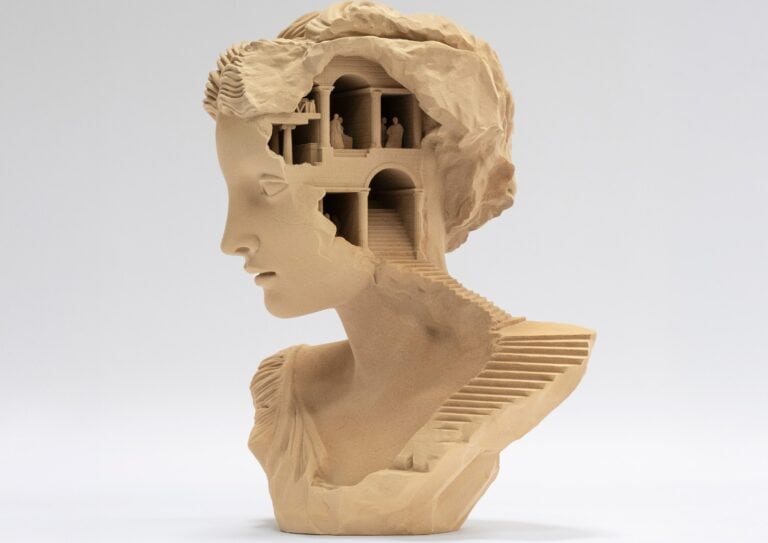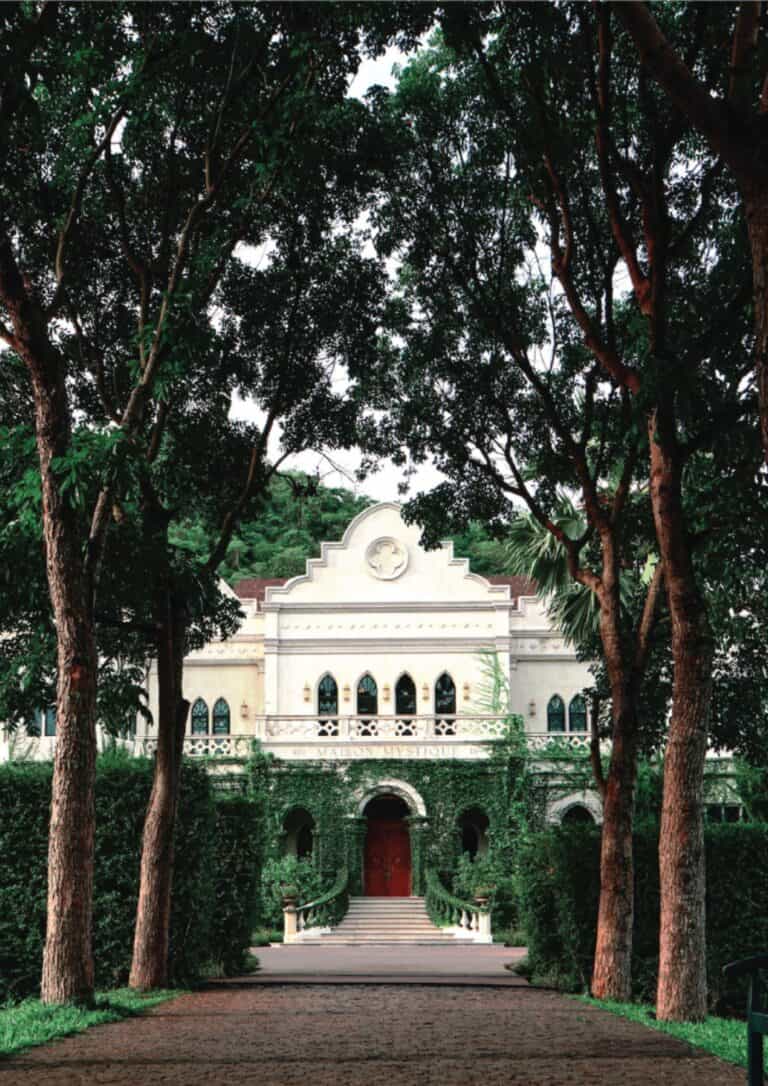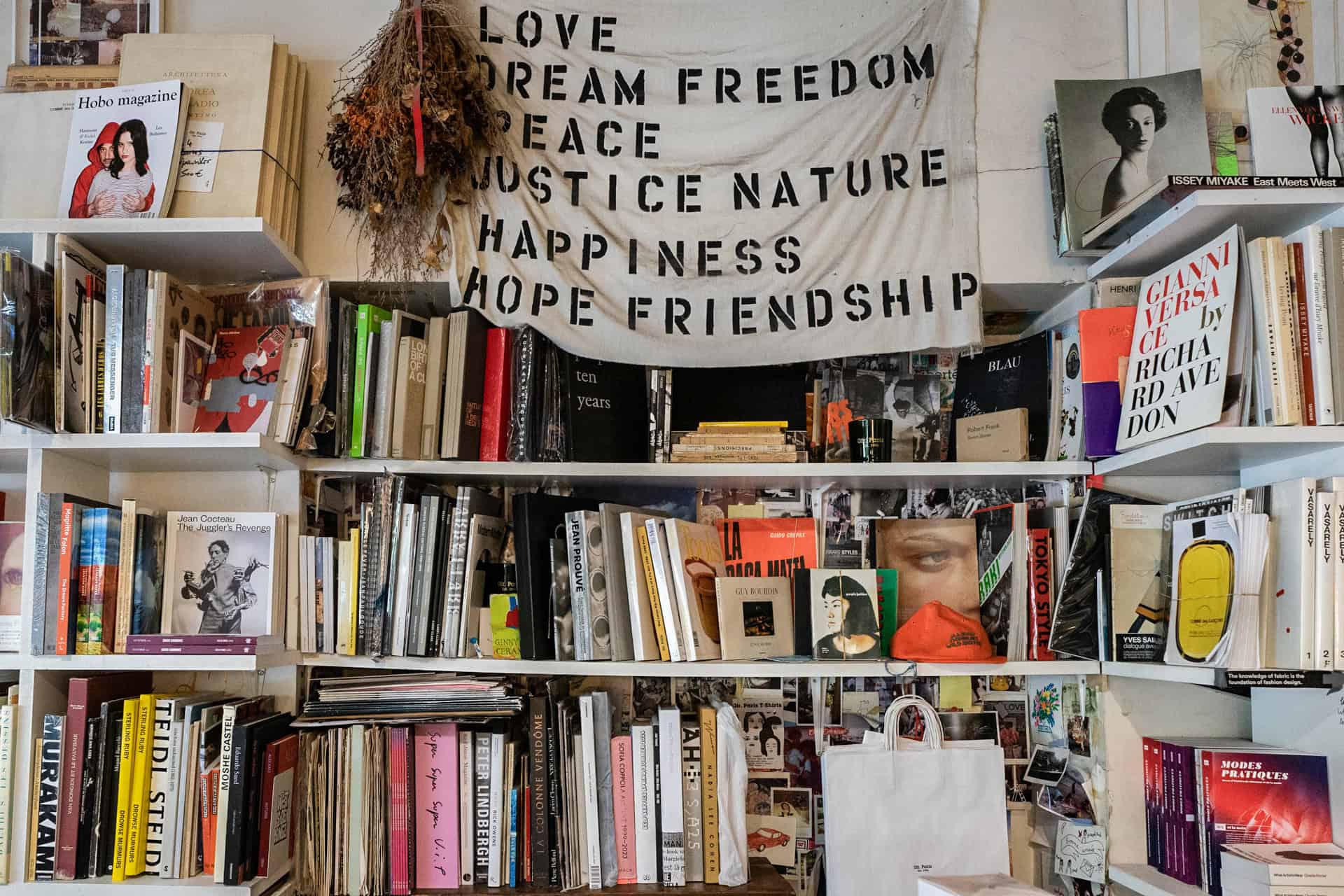
BOOKSTORES OF PARIS
Marie Loire Moulin
Since the 18th century, the bookstores of Paris have been gathering places for writers, philosophers and revolutionaries. From Voltaire to Sartre, generations have found refuge between the shelves. Today, these spaces still invite readers to slow down and connect.
Bookstores of Paris with Bohemian Soul
Librairie OFR. – 20, rue Dupetit-Thouars
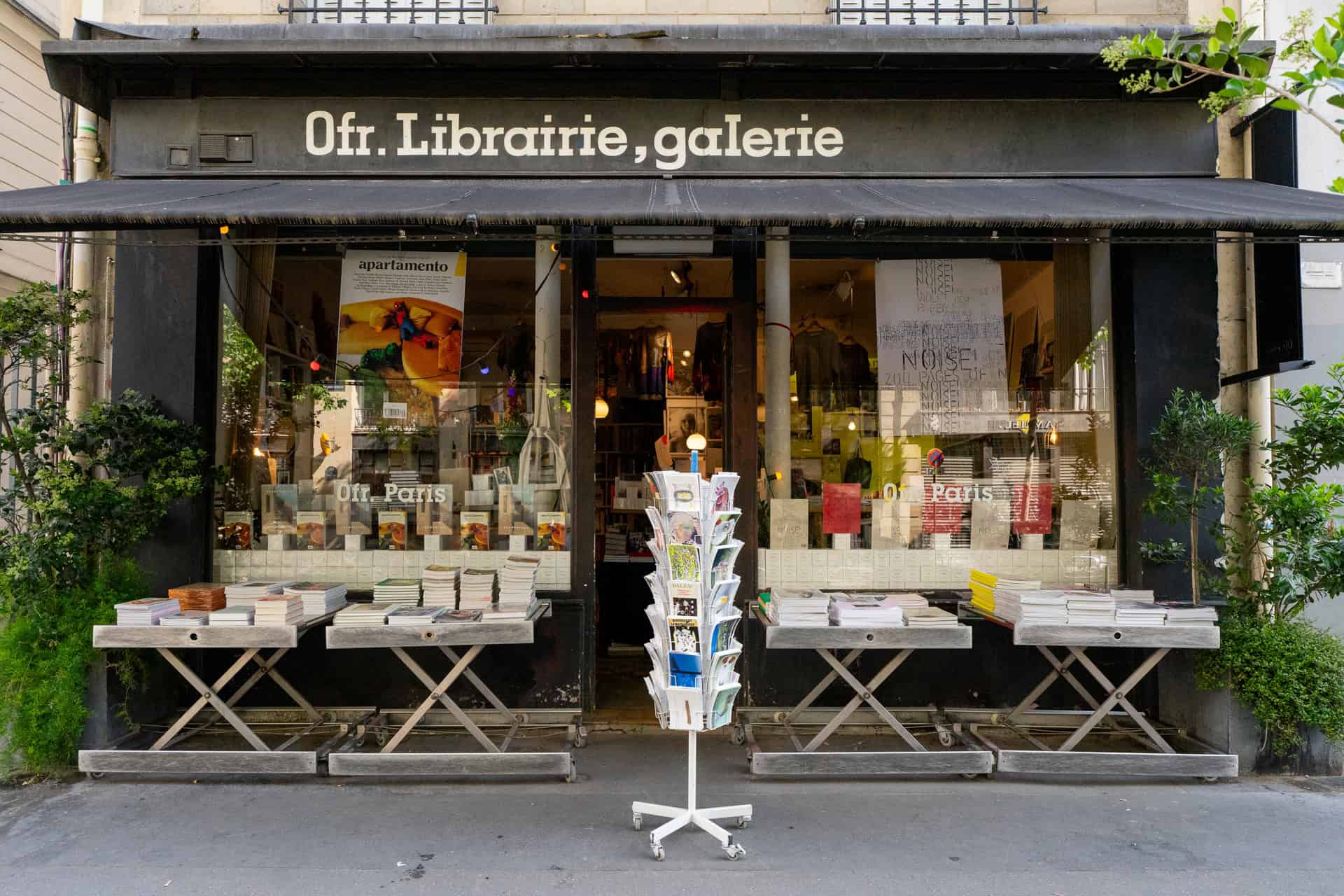
OFR. curates the sharpest titles in art, photography and fashion, blending cult magazines with limited edition books. Moreover, the space doubles as an indie publishing house and creative agency, hosting
exhibitions from modernist graphics to surf culture.
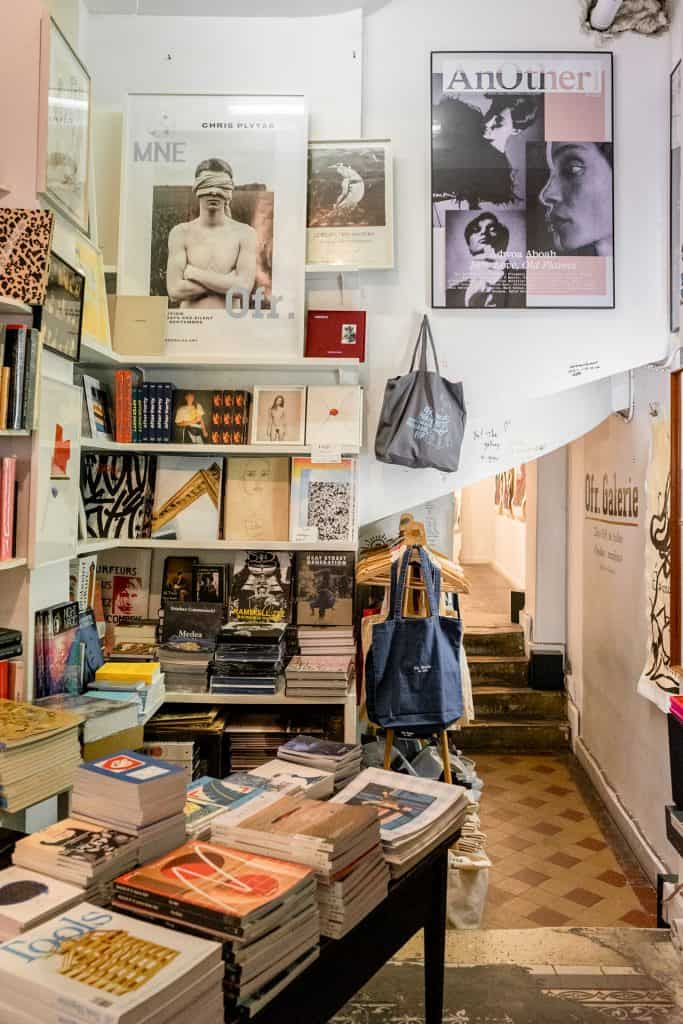
Photograph: Louis Lambert
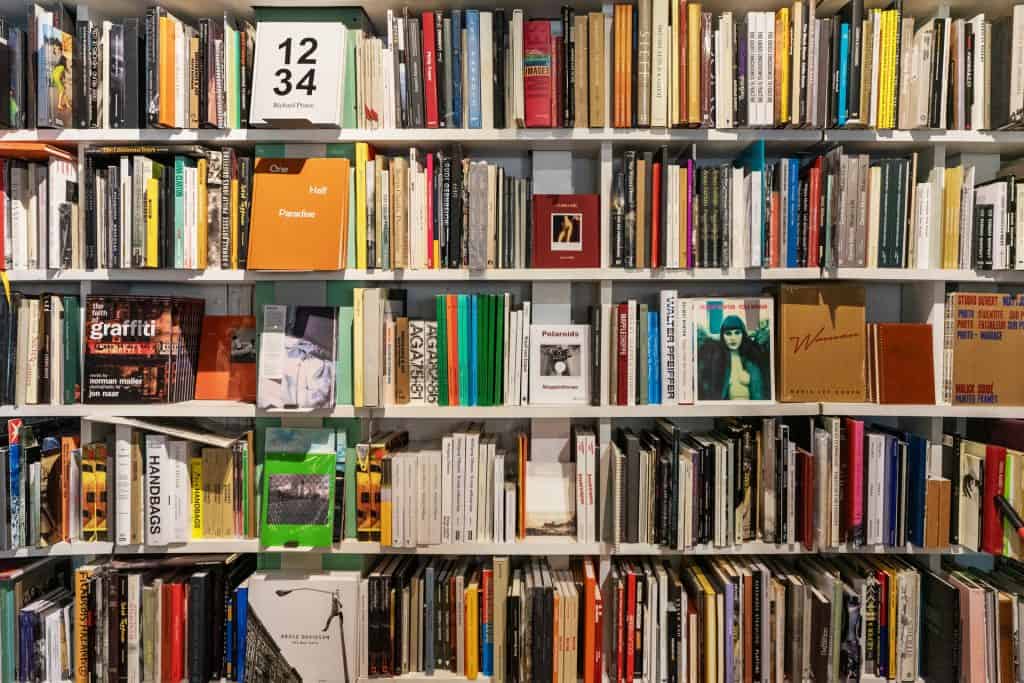
Historic Bookstores of Paris and Literary Institutions
Galignani – 224, rue de Rivoli
Galignani opened in 1801 and quickly became a cornerstone of Paris’s anglophone literary scene. It combined bookselling with publishing, journalism and a reading room that rivaled any English club. Moreover, generations of writers and intellectuals frequented its shelves.
Delamain – 155, Rue Saint-Honoré
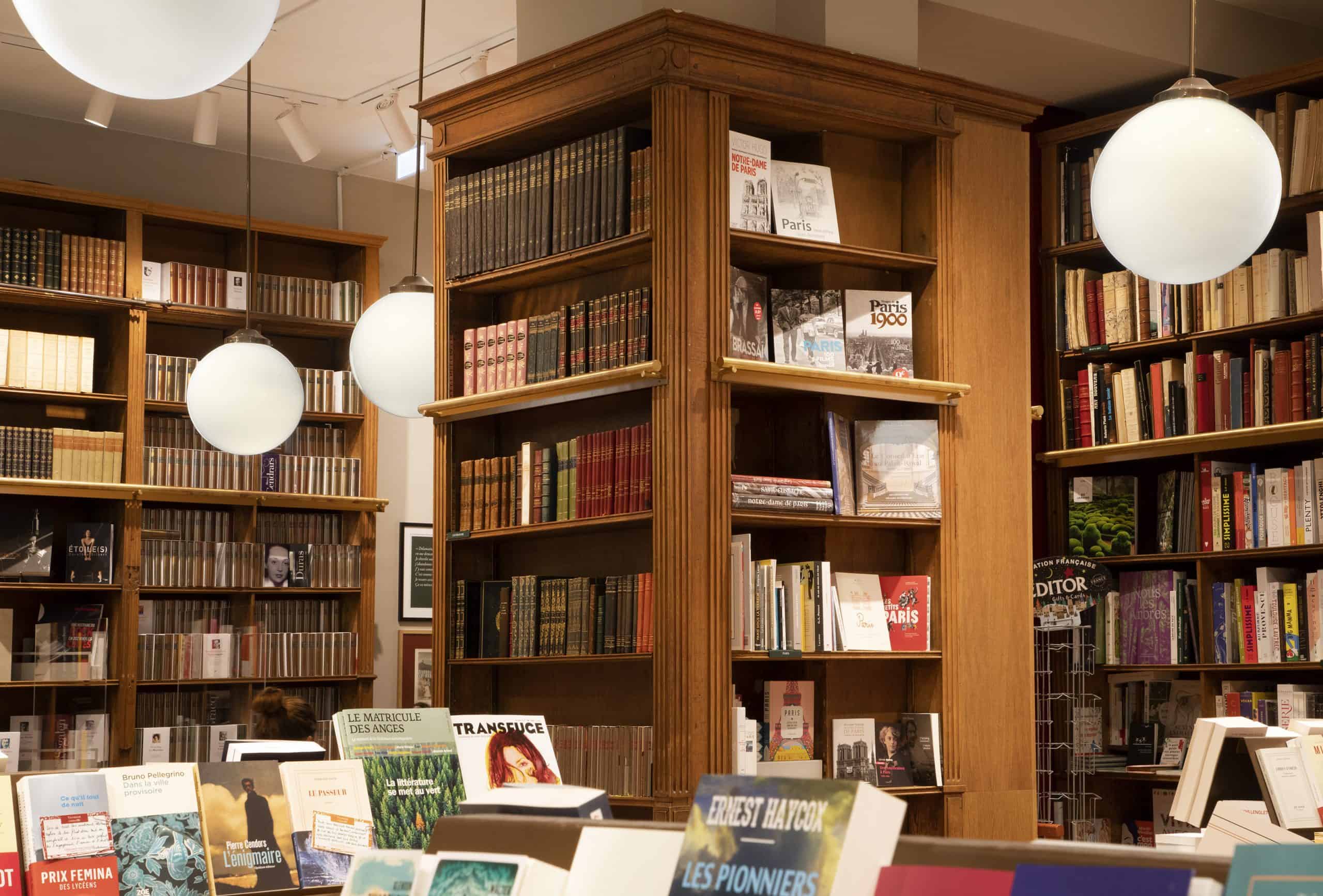
Delamain stands proudly as one of Paris’s oldest bookstores. It showcases a mix of French classics and contemporary titles. Furthermore, wood-paneled interiors and curated selections attract both loyal readers and curious newcomers.
Jousseaume – Galerie Vivienne
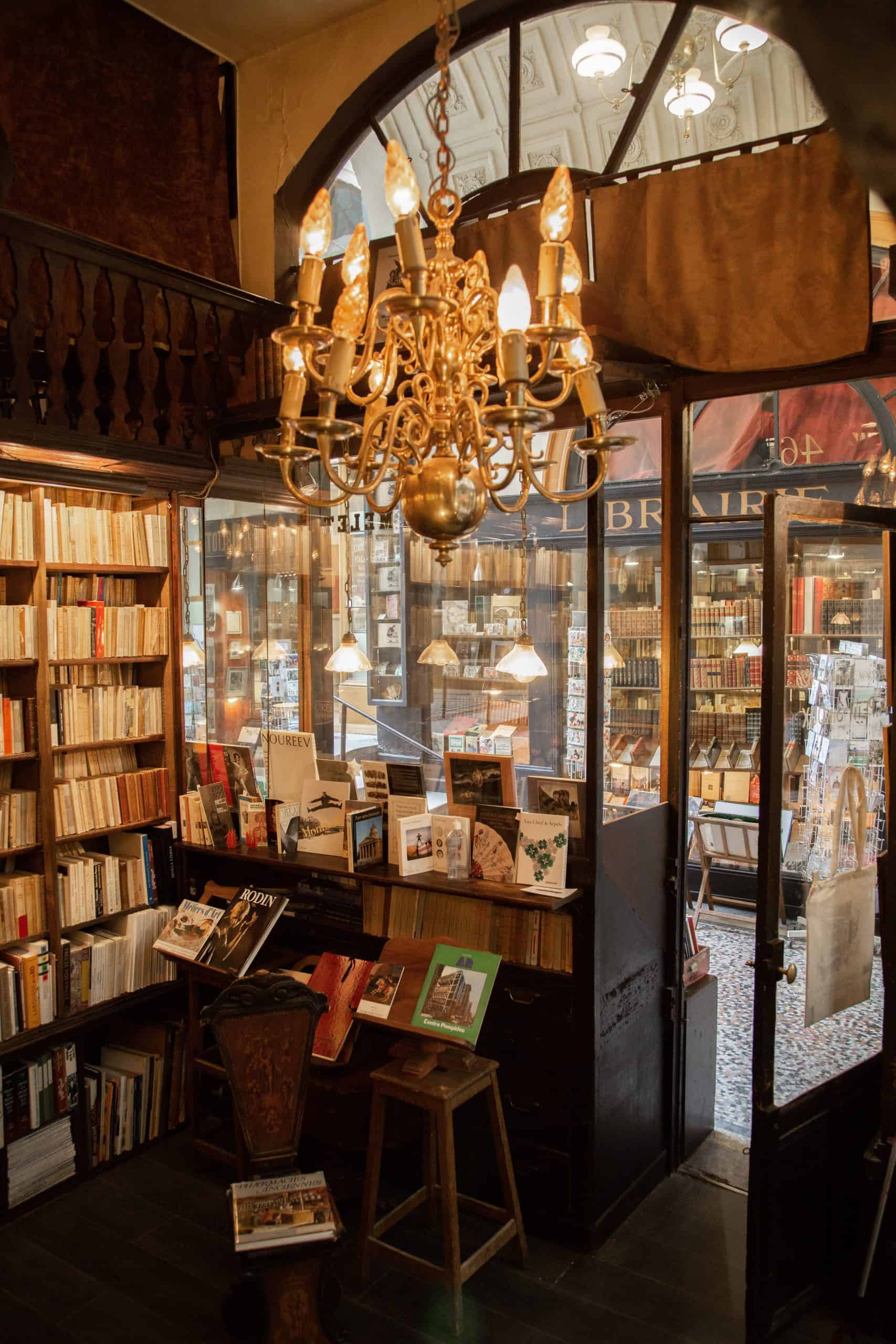
Librairie Jousseaume curates 19th and 20th-century works in literature, poetry, history, and illustration. Additionally, it offers antique prints and an outdoor stall of discounted paperbacks. Locals and collectors return for its timeless atmosphere.
Shakespeare and Company – 37 Rue de la Bûcherie
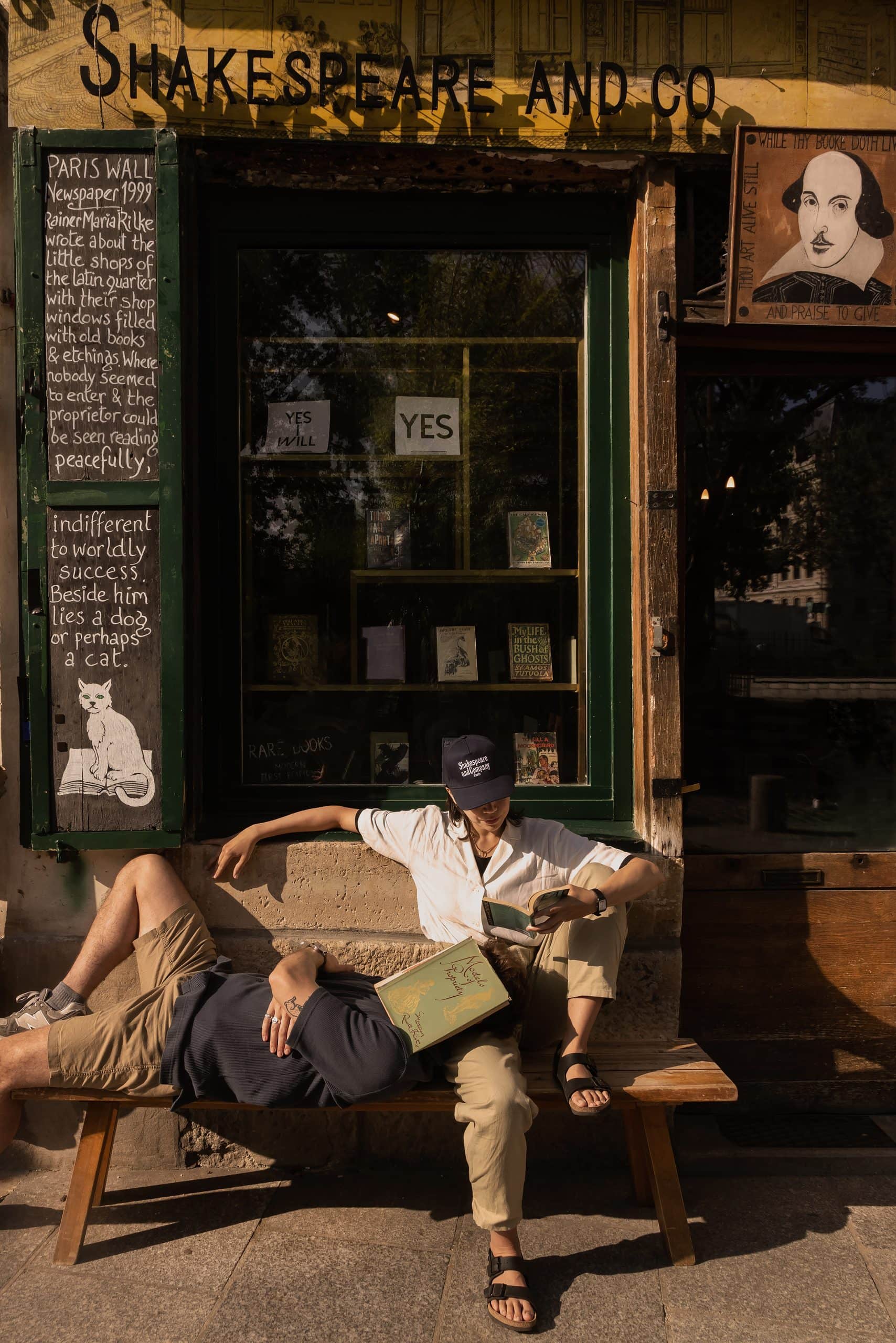
George Whitman founded Shakespeare and Company in 1951, turning it into a haven for anglophone writers in Paris. Since then, the bookstore has welcomed thousands of authors to read and write among its shelves.
Design and Visual Culture Havens
Artazart – 83, Quai de Valmy
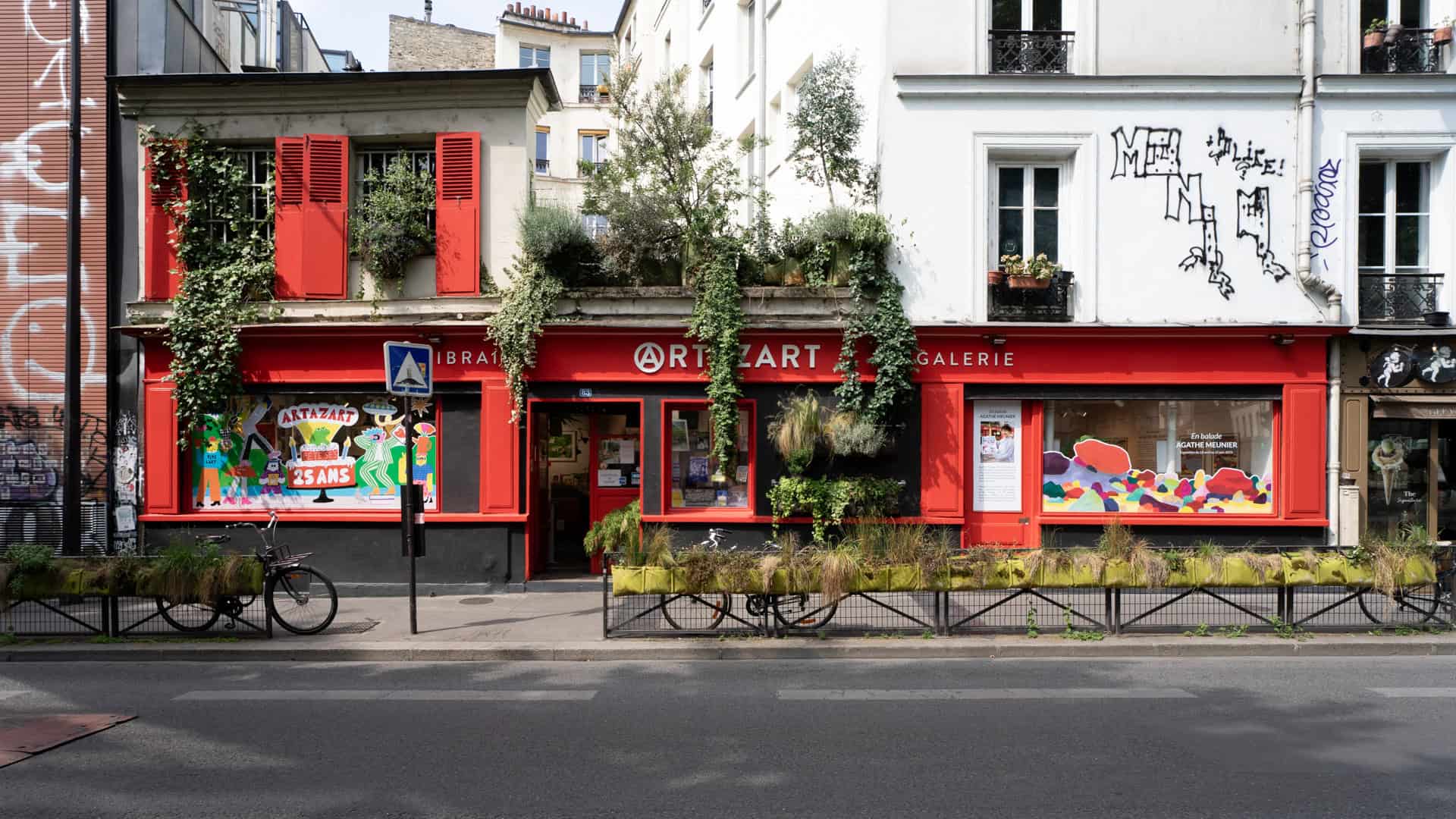
Artazart opened in 2000 and quickly became a vibrant design bookstore. It embodied photography, urban culture, and bold curation through its signature orange jackets and industrial interiors. In addition, the team regularly hosted exhibitions, launched indie projects, and championed visual storytelling.. As time went on, Artazart evolved, but its creative pulse never faded.
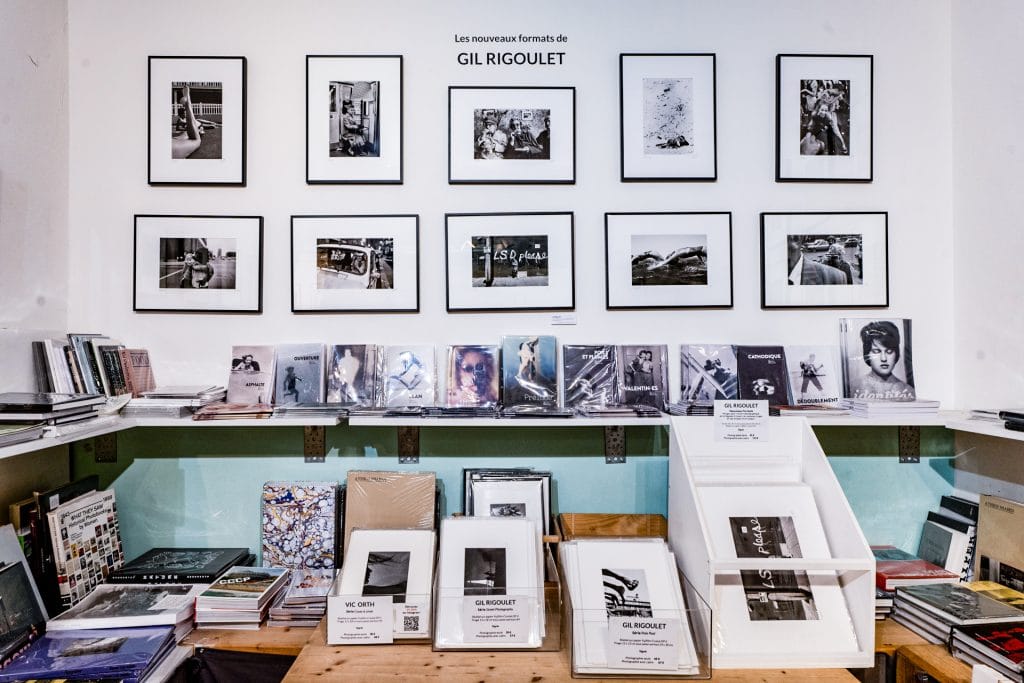
Bookstores of Paris for the Culinary Connoisseur
La Librairie Gourmande – 96, rue Montmartre
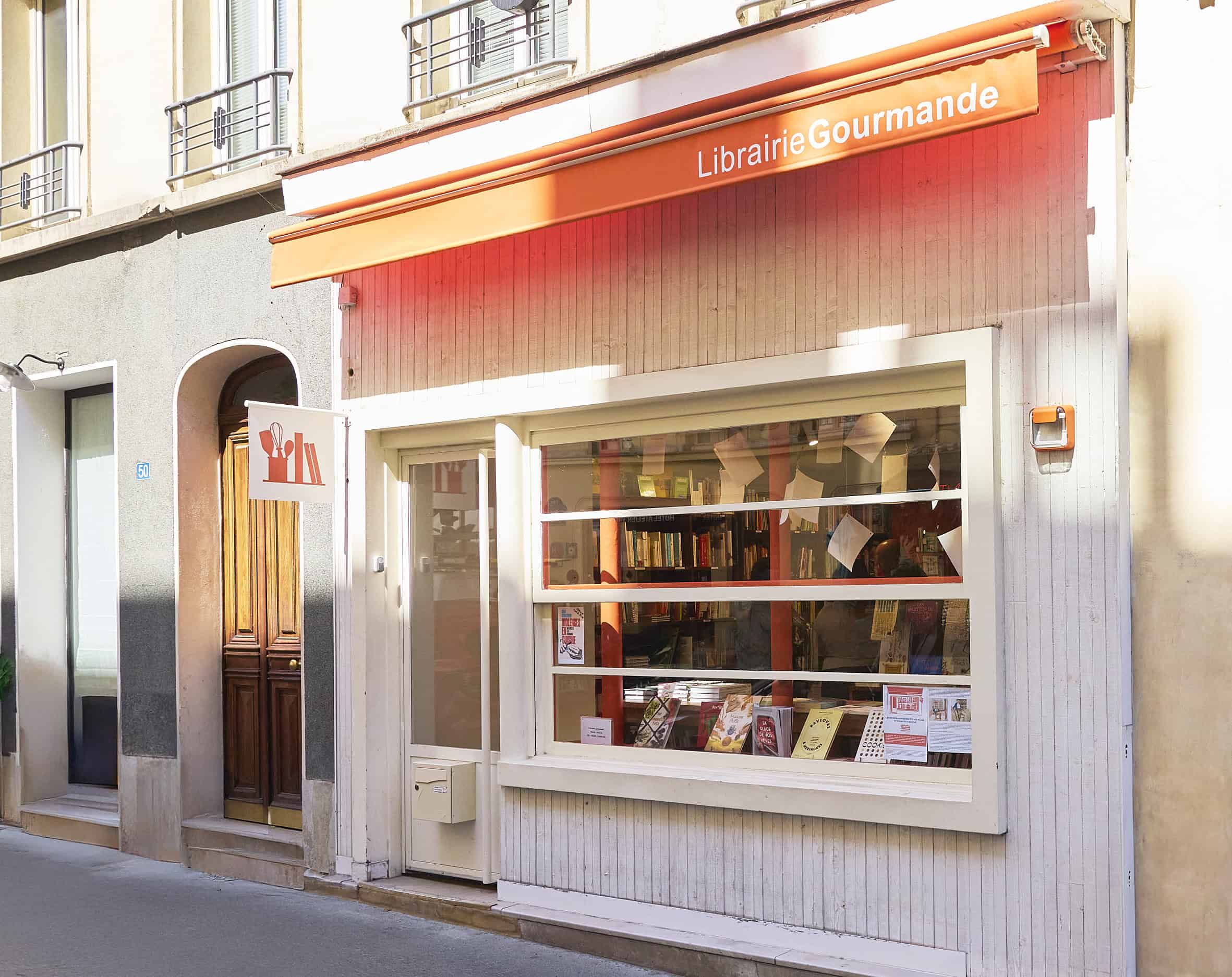
Photograph by Delphine Constantini. Courtesy of La Librairie Gourmande.
Cookbooks are sacred texts here. In fact, chefs, food stylists, and flavor obsessives come to browse rare editions and culinary experiments. You’ll find both Escoffier classics and new Nordic manifestos. Moreover, the staff can talk about fermentation with scholarly passion.
Why These Bookstores of Paris Still Matter
The best bookstores of Paris are more than places to buy books. All in all, they’re places to think and feel alive. Amid algorithms and fast culture, these spots offer something slower and infinitely richer. Because sometimes, turning a page is still the most radical move.
From ink to image, the bookstores of Paris fuel imagination, just as Barbara Cole’s surreal worlds invite us to step beyond the visible.
Share this post
Marie Loire Moulin approaches fashion as an immersive language—one that expresses identity, character, and cultural influence. Echoing Jean Cocteau’s observation that “Fashion is what goes out of fashion,” Moulin embraces the paradox at the heart of her craft. For her, fashion is a living, breathing art form—constantly deconstructed, reimagined, and reshaped in response to the world around it.
What fuels Marie Loire’s creativity is the ability to blend worlds—to explore the intersections of fashion, technology, history, and art. She is inspired by how these disciplines collide to generate experiences that are not only visually compelling, but also deeply purposeful.
Moulin is particularly drawn to artistic expressions that serve as bridges—linking cultures, fusing tradition with innovation. Sustainability, for her, is not a buzzword but a foundation. She sees it as a long-term commitment to thoughtful creation, not a passing aesthetic.
As a stylist working with actors on film sets, Marie Loire thrives on transforming a director’s vision into living, breathing characters. Through wardrobe and silhouette, she builds atmospheres that tell stories—stories of emotion, intention, and presence.
Her creative drive extends into virtual reality and immersive art, where she explores how emerging technologies can shift perception and spark connection across cultural boundaries. For Moulin, the digital realm is just another canvas—one that, when used with care, has the potential to resonate as powerfully as the physical world.
Whether on set or in virtual space, Marie Loire seeks originality and depth. Her work is marked by richly layered references, a reverence for detail, and a belief that fashion—at its best—can speak not just to the eye, but to the mind.
Read Next


